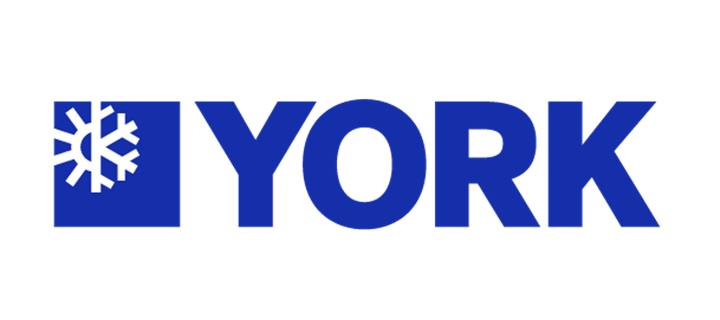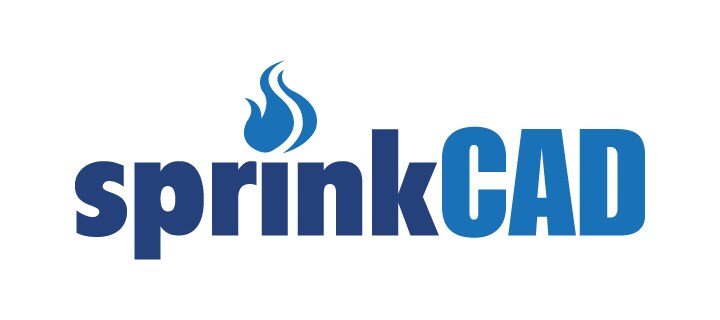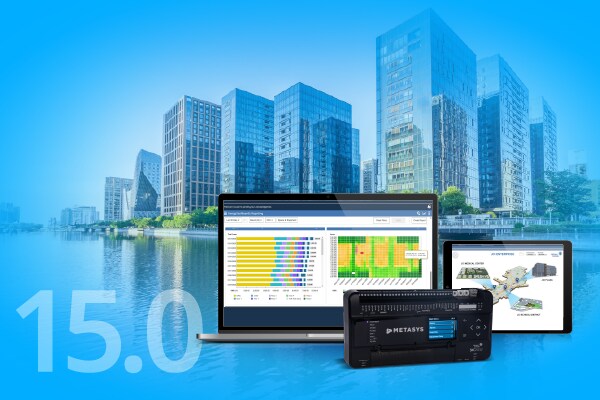- Johnson Controls
- Building Insights
- 6 ways to bridge the IT skills gap in data center operations
6 ways to bridge the IT skills gap in data center operations
The data center world is changing at almost lightning speed, with AI as the major catalyst. While this surge in the adoption of AI is increasing demand for data center capacity, it’s also opening doors for innovation, efficiency and growth. Businesses are using AI to streamline operations, provide better customer experiences and create smarter products and services.
This technological shift is also helping fuel job creation across sectors – from infrastructure development and engineering to data science and AI ethics. As a result, people are being empowered with new career paths and skillsets.
However, as data centers pop up everywhere, and with global data center supply projected to grow by over 20% in 2025, owners and operators are struggling to find enough skilled workers who know how to run day-to-day operations.
How can operators keep rolling out new data centers successfully and ensure continuous operations going forward? Why aren't there enough trained people to keep up with the explosive increase in new data centers? Let’s look at some causes of today’s skill gap and explore some practical steps that may help resolve it.
The scramble for IT talent in data centers comes down to several key factors:
- Speed of change and delay in skills-to-classroom. Formal education hasn’t been able to keep pace with the innovation and leaps forward happening in evolving data centers. There’s a particular shortfall in workers trained in cloud computing and AI.
- Lack of investment in on-the-job training.
- An aging workforce means a huge wave of data center specialists are reaching retirement age and leaving the industry.
- Poor visibility of data center specialists is making recruitment harder.
- Limited new talent is entering the industry, meaning the talent pipeline is running dry.
These are just some of the reasons why nearly two-thirds of operators report difficulty retaining staff, finding qualified candidates or both. In fact, by the end of 2025 there’ll be a need for 325,000 new full-time data jobs worldwide, according to a forecast by Uptime Institute. Data center operators should be acting now to bridge this gap.
1. Build a future-ready talent pipeline
How can organizations attract emerging talent to data center careers? One way is to start early. The data center industry can tackle the IT talent shortage from the ground up by establishing a comprehensive educational approach, working with schools, universities and industry associations to raise awareness and ignite interest.
Colocation or multi-tenant providers (the go-to data centers for smaller operations) and hyperscale facilities (usually owned by major cloud companies) need to build strong partnerships with educational institutions to develop a steady pipeline of IT talent. That means setting up structured workforce development programs – like internships, apprenticeships and mentorship initiatives – to attract, develop and retain qualified professionals, while ensuring consistent recruitment of skilled personnel.
2. Implement scalable, modular training programs
To keep up with the pace of change, data center employers need flexible and focused training systems that help IT teams build the essential skills they need right when they need them. If training content is designed into small, customized and reusable lessons – sometimes called microlearning modules – it can be delivered and tracked by an online learning management system. As well as reducing onboarding time for new joiners, this approach enables organizations to stay aligned with the rapid changes shaping the industry as it scales globally. Learners can also study at their own pace, on their own schedule.
3. Upskill your existing workforce with cross training
Cross training data center IT teams beyond the limits of their primary job roles will create a versatile workforce that can keep operations running seamlessly. Even when people are out, turnover happens or AI workloads ramp up. This will help cut costs and strengthen data center operations.
While there are valuable operational benefits to cross training data center IT staff, it also boosts employee engagement and retention by creating new opportunities for career growth.
Sharing knowledge across teams will help preserve a data center’s in-house IT expertise and nurture a culture of continuous learning. Mentoring programs pair a less experienced employee (mentee) with someone more seasoned, helping create room for personal and professional growth through shared skills, insights and experience. It’s a win-win that can unlock career success and energize team development.
4. Use technology to offset IT labor shortages
Data center owners and operators can bring in smart technologies to help ease the pressure of limited IT staff, such as:
- AI-driven monitoring and diagnostics: this can reduce the need for manual troubleshooting. Robotic process automation can address repetitive tasks like ticketing, reporting and patching.
- AI-based recruitment tools: these will streamline hiring by matching candidates to roles faster.
- Infrastructure as Code (IaC): this lets you manage a data center’s entire infrastructure programmatically. IaC tools help reduce reliance on manual configuration and speed up the process for onboarding junior staff.
- Digital twin – virtual models of your data center: these give a remote view of your entire estate. They’re especially useful when you’re short of staff or specialist skills, helping you spot issues and act without being on-site.
5. Foster an inclusive and purpose-driven culture
A work environment where everyone can thrive around common goals isn’t just a nice-to-have, it’s now a must-have for attracting and keeping the best people in data center IT roles.
Start with the basics: clear direction set by leadership, communication that flows both ways and fair growth opportunities for everyone on the team. Data analytics can help identify and address disparities while leadership takes positive steps to address them.
Make sure hiring and promotion work is fair across all data center IT roles, from technicians to senior engineers. Encourage employee resource groups (ERGs) or business resource groups (BRGs), which provide valuable peer support and knowledge sharing, while bias training and cross-functional data projects help teams collaborate more effectively.
The payoff from this consistent approach will be stronger, more resilient IT teams and better staff retention rates.
6. Choose a solutions partner who can deliver on the complex needs of data centers
Given the critical nature of data centers, having reliable solutions and a reliable partner are non-negotiables in today’s world.
With its worldwide footprint, Johnson Controls is helping data centers meet their goals by delivering integrated solutions across the thermal management chain, intelligent building automation, white glove service and parts availability, fire suppression and security.
It has made significant investments and undertaken massive manufacturing expansion – particularly in thermal innovation. Its specialist facility in Pennsylvania, Johnson Controls Advanced Development Engineering Center (JADEC), rigorously tests chillers, air handlers and their subcomponents and their unique applications within a data center setting. This means faster innovation and rapid deployment of new products at scale when they’re needed – serving customers who require consistency around the world.
Through its Global Data Center Solutions Division, Johnson Controls offers customers vast data center knowledge and a unified approach, placing a strong focus on actively listening to understand their needs.
Jésus Martinez Sastre, Division Director of Installation and Service for Iberia, Portugal and the Controls domain of Southern Europe, explains that this commitment goes deeper than surface-level engagement. “The company embeds engineers directly in client design processes,” he says, “with these partnerships typically spanning 12 to 18 months before commercial agreements.” By dedicating hours to these collaborative efforts, Johnson Controls ensures that customer needs are heard and deeply understood.
The real competitive edge for data centers isn’t only tech, it’s talent too
Smart data center operators can turn the challenge of the skills gap into competitive advantage by combining better training, cross-functional teams and inclusive hiring with the right technology tools and forming partnerships that go way beyond equipment supply to ensure consistent data center performance.
The industry can also help itself by actively marketing the exciting new roles emerging in data centers, such as AI operations analysts, digital twin specialists and remote infrastructure managers. This will help attract a new generation of talent and refresh perceptions of what a career in this field can look like.
By acting now, they’ll develop the skilled workforce they need and start to close the IT skills gap in data centers. As with so many industries, in the data center world, your people strategy should be your business strategy.
Take steps to close or prevent a skills gap in your data center operations – embrace inclusive hiring, invest in smarter training, get the right mix of tools and technologies and partner with experts to build and retain resilient, high-performing teams.
See how we're changing the tide in the data center market
FAQs about the IT skills gap
Q. Why is the IT skills gap a problem for data centers?
A shortage of personnel with IT skills could cause repercussions for your data center. Here are six ways it could affect your operations:
- Downtime and errors reduce data center efficiency and compromise security.
- Lack of innovation limits competitiveness and customer and investor interest.
- Constant pressure and limited growth lead to burnout and staff turnover.
- Non-compliance leads to legal exposure, financial penalties and loss of customer confidence.
- Rising costs stem from scarcity of skills and ongoing training needs.
- Staff shortages cause missed deadlines and increased business risk.
Q. How can companies attract young talent to IT careers in data centers?
Young people at career entry level or earlier need a tangible understanding of the impact of IT in the workplace and what opportunities may lie ahead for them. Here are five ways you can make a career in IT attractive to a new generation of employees:
- Engage with potential candidates early. Try modernizing your brand, appearing in the media they use most and using storytelling to show the impact of data center technology on real life.
- Invest in internships and apprenticeships. Attract career-minded employees by partnering with universities and coding bootcamps to offer hands-on experience.
- Support continuous learning. Offer training opportunities including access to certifications, online courses and learning platforms like Coursera, LinkedIn Learning and Udemy.
- Demonstrate through education of the power of advanced technology in data centers – such as digital twins. This will help spark curiosity and encourage the next generation to explore careers in data center innovation.
- Work towards changing how data centers are perceived, as they may not always appear as attractive as careers in cyber security or software.
Q. What technologies help offset the IT skills shortage in data centers?
Data centers that implement emerging technologies can effectively address staff shortages and increase their talent pool. AI-powered predictive maintenance tools will help data centers optimize operations by highlighting their maintenance needs and adjusting to energy demand and cooling needs in real time.
Digital twins can help a limited data center staff oversee the estate and test changes, such as the introduction of new equipment, in a risk-free way so that any measures they implement have a positive effect. As they become more powerful, VR and AR wearables will allow skilled managers to remotely guide less-skilled employees to carry out maintenance tasks.
Q. How long does it take to train a new data center technician?
There’s no exact answer to this question as it will depend on the demands of your data centers and the level of knowledge and previous experience each candidate has. As a general overview, a typical training timeline can range from three months to four years. A bachelor’s degree in computer science, IT, network engineering or electrical engineering may be required, which takes around four years of study to complete. Entry-level certifications take three to six months of study, while advanced certifications take six to 12 months, though this will depend on previous experience.

















.jpg?la=en&h=320&w=720&hash=244C75B74F0F77521D56164450973BCD)














.jpg?la=en&h=310&w=720&hash=8D9823F26AA80B2B75C3E4B2E61770DC)


.jpg?la=en&h=320&w=719&hash=13CA7E4AA3E453809B6726B561F2F4DD)
.jpg?la=en&h=306&w=720&hash=F21A7CD3C49EFBF4D41F00691D09AEAC)

.png?la=en&h=320&w=720&hash=18CFCCD916C92D922F600511FABD775D)














